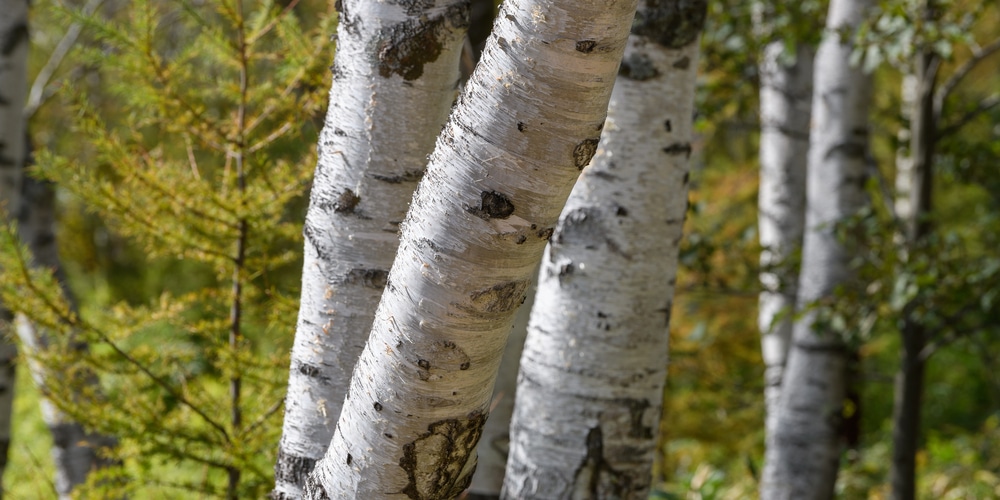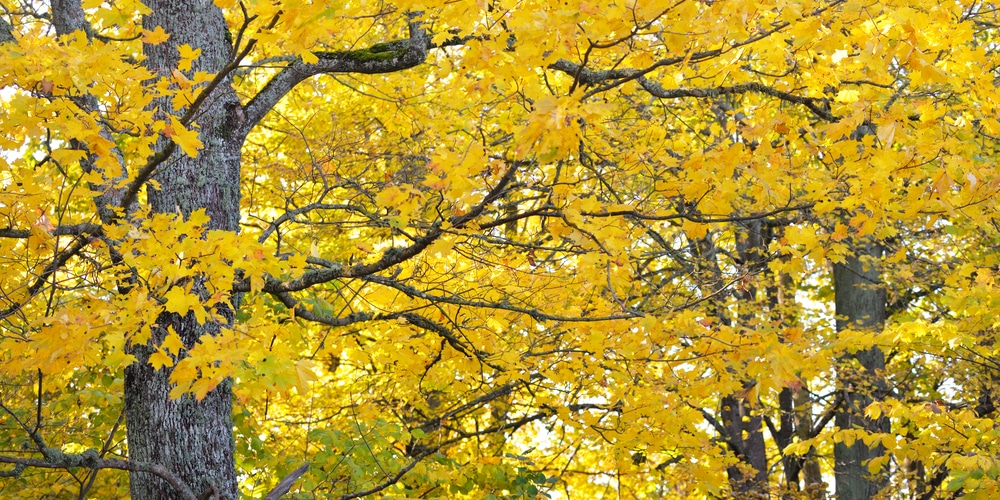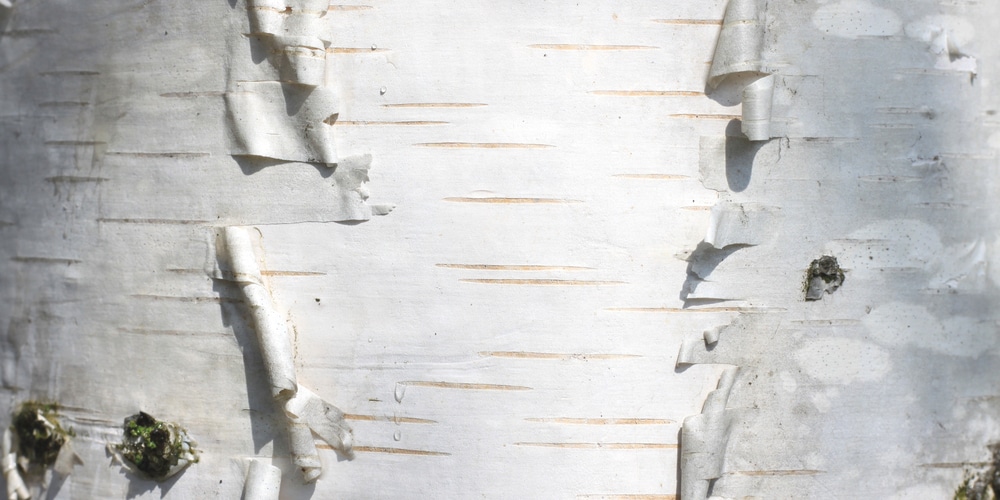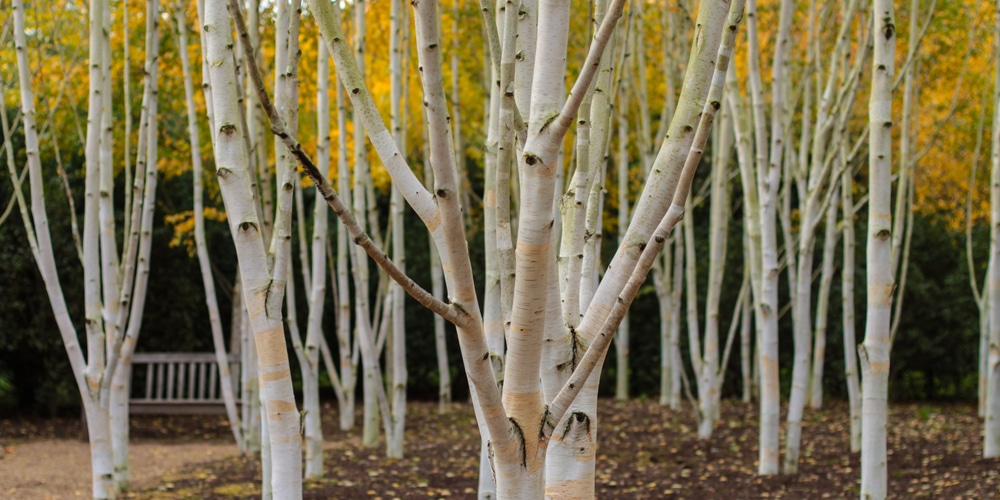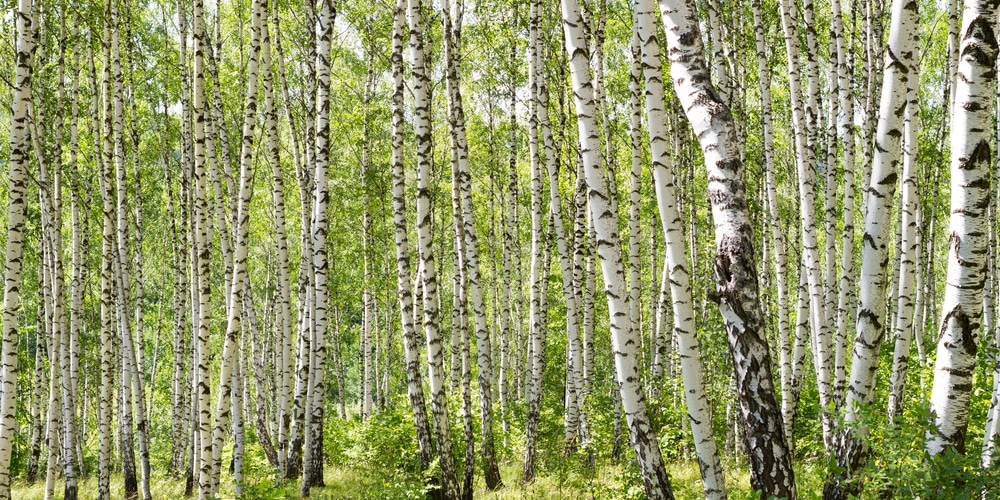Birch tree leaves in fall are a sight to behold, but did you know that there are several types of birch trees?
Each of these 8 fall birch trees has its own distinctive and beautiful foliage to show off.
Fall Birch Trees
Sweet Birch
Sweet Birch is native to the eastern part of North America and grows to a modest 40 to 60 feet upon maturity. It’s called black birch, cherry birch, and spice birch and sports a darker bark color than other birch types.
The black and brown chocolate bark serves to highlight the green leaves that turn a bright and pleasing canary yellow in fall. Sweet Birch grows in zones 3 to 7 and requires full sun and well-drained soil.
Japanese White Birch
A weeping variety with pendant branchlets and thin branches, the Japanese White Birch will surely look amazing all season long and in any yard or landscape.
The tree is hardy in zones 4 through 7 and can grow in partial sun as long as it sits in well-draining soil. Japanese White Birch has that characteristic white bark, but its foliage is also a point of interest. Come fall season, the lime-green foliage turns into a glorious golden yellow before it falls to the ground.
Dwarf Birch
Dwarf birch is aptly named as it only grows to a maximum height of 3 feet. It’s one of the few birch tree types that can thrive in a container.
Dwarf birch has an upward and cup-shaped growth habit, with the bright green leaves turning orange, red and yellow in fall. It’s native to Alaska and grows in zones 2 to 7. Furthermore, the deciduous shrub can tolerate partial sun as long as you get the watering schedule right.
Yellow Birch
Also called golden birch, the handsome Yellow Birch is prized by homeowners and gardeners alike due to its showy nature. The bark peels more easily than other birch types and sports a brilliant copper hue.
The tall deciduous tree begins its fall foliage with a complete transformation from dull green to searing yellow. Your nose also gets a whiff of evergreen whenever you’re near twigs and leaves.
Its height makes planting yellow birch somewhat difficult. Furthermore, it doesn’t like to be exposed to the hot sun for too long. You’ll need to regularly water this particular type of birch tree as well.
Paper Birch
Probably the most popular birch tree specimen around, the Paper Birch has a short lifespan but it’s very beneficial to the surrounding wildlife. It’s native to northern regions and grows well in zones 2 through 7.
Paper birch sports a complete fall look using not only its foliage but its trunk as well. The peeling white bark is beautifully scored by black and pink streaks and gives way to a seemingly magical green-to-yellow leaf transformation just before the weather gets too cold. Paper birch prefers a spot with full sun and a moist medium.
Himalayan Birch
If you’re looking for a true fall stunner then the Himalayan Birch is a must-have. The characteristic white bark is preceded by attractive flowers in the spring, then deep gold foliage towards the end of the growing season.
Himalayan Birch is medium-sized and grows up to 50 feet tall. It assumes a pyramidal form with a single trunk. Himalayan birch lives longer in cooler climates but it’s known to thrive in zones 6 and 7.
River Birch
One of the toughest birch tree species around, the River Birch can tolerate a small degree of drought or neglect, as well as hot days, and live in part shade.
Planting a river birch gives you a fascinating tree specimen with trunk colors that range from salmon to cinnamon and even red. When fall comes around the leaves turn from shiny green to a marvelous blazing yellow.
European Birch
European birch grows up to 60 feet, with droopy branches and green foliage that turn to canary yellow in the fall season. You’ll want to place the tree where it gets full sunlight so it can grow quickly, as well as well-draining soil that’s constantly moist.
Betula pendula are hardy enough to survive zone 2 winters and usually spring up as soon as the temperature rises.
Related Article: Birch Trees California

